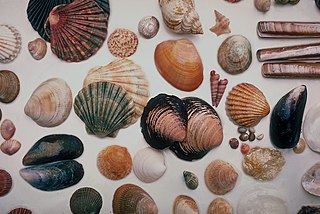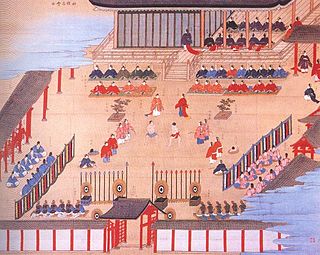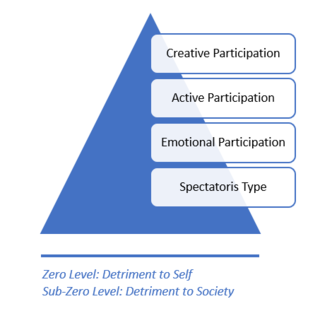
A hobby is considered to be a regular activity that is done for enjoyment, typically during one's leisure time. Hobbies include collecting themed items and objects, engaging in creative and artistic pursuits, playing sports, or pursuing other amusements or avocations. Participation in hobbies encourages acquiring substantial skills and knowledge in that area. A list of hobbies changes with renewed interests and developing fashions, making it diverse and lengthy. Hobbies tend to follow trends in society. For example, stamp collecting was popular during the nineteenth and twentieth centuries as postal systems were the main means of communication; as of 2024, video games became more popular following technological advances. The advancing production and technology of the nineteenth century provided workers with more leisure time to engage in hobbies. Because of this, the efforts of people investing in hobbies has increased with time.

Recreation is an activity of leisure, leisure being discretionary time. The "need to do something for recreation" is an essential element of human biology and psychology. Recreational activities are often done for enjoyment, amusement, or pleasure and are considered to be "fun".

In the history of the United Kingdom and the British Empire, the Victorian era was the reign of Queen Victoria, from 20 June 1837 until her death on 22 January 1901. Slightly different definitions are sometimes used. The era followed the Georgian era and preceded the Edwardian era, and its later half overlaps with the first part of the Belle Époque era of continental Europe.

NSGemeinschaftKraft durch Freude was a German NSDAP-operated leisure organization in Nazi Germany. It was part of the German Labour Front, the national labour organization at that time.

Sociology of sport, alternately referred to as sports sociology, is a sub-discipline of sociology which focuses on sports as social phenomena. It is an area of study concerned with the relationship between sociology and sports, and also various socio-cultural structures, patterns, and organizations or groups involved with sport. This area of study discusses the positive impact sports have on individual people and society as a whole economically, financially, and socially. Sociology of sport attempts to view the actions and behavior of sports teams and their players through the eyes of a sociologist.
Social history, often called "history from below", is a field of history that looks at the lived experience of the past. Historians who write social history are called social historians.

The history of sports extends back to the Ancient world in 7000 BC. The physical activity that developed into sports had early links with warfare and entertainment.

Anglicisation or anglicization is a form of cultural assimilation whereby something non-English becomes assimilated into or influenced by the culture of England. It can be sociocultural, in which a non-English or place adopts the English language or culture; institutional, in which institutions are influenced by those of England or the United Kingdom; or linguistic, in which a non-English term or name is altered due to the cultural influence of the English language. It can also refer to the influence of English soft power, which includes media, cuisine, popular culture, technology, business practices, laws and political systems.

The Theory of the Leisure Class: An Economic Study of Institutions (1899), by Thorstein Veblen, is a treatise of economics and sociology, and a critique of conspicuous consumption as a function of social class and of consumerism, which are social activities derived from the social stratification of people and the division of labor; the social institutions of the feudal period that have continued to the modern era.
Labor history is a sub-discipline of social history which specializes on the history of the working classes and the labor movement. Labor historians may concern themselves with issues of gender, race, ethnicity, and other factors besides class but chiefly focus on urban or industrial societies which distinguishes it from rural history.

Sport holds a central place in British culture, and the United Kingdom has played a key role in both the development and global spread of many sports. In the early stages of organized sport, the Home Nations were instrumental in establishing formal rules and forming some of the earliest governing bodies, national teams, and domestic league competitions.
Otto Newman was an Austrian-born sociologist who was a professor at Stirling University in Scotland, Chairman of the Sociology Department at South Bank University in London, and adjunct professor at San Diego State University in California. His extensive writings have been published on four continents. His main works include: Gambling: Hazard and Reward and The Challenge of Corporatism (Macmillan). He also authored extensive research reports leading to policy implementation, and books and papers on globalism including, "The Third Way" and "American Declinism".

Play is a range of intrinsically motivated activities done for recreation. Play is commonly associated with children and juvenile-level activities, but may be engaged in at any life stage, and among other higher-functioning animals as well, most notably mammals and birds.

Outdoor recreation or outdoor activity refers to recreation done outside, most commonly in natural settings. The activities that encompass outdoor recreation vary depending on the physical environment they are being carried out in. These activities can include fishing, hunting, backpacking, walking and horseback riding — and can be completed individually or collectively. Outdoor recreation is a broad concept that encompasses a varying range of activities and landscapes.

Sport is a form of physical activity or game. Often competitive and organized, sports use, maintain, or improve physical ability and skills. They also provide enjoyment to participants and, in some cases, entertainment to spectators. Many sports exist, with different participant numbers, some are done by a single person with others being done by hundreds. Most sports take place either in teams or competing as individuals. Some sports allow a "tie" or "draw", in which there is no single winner; others provide tie-breaking methods to ensure one winner. A number of contests may be arranged in a tournament format, producing a champion. Many sports leagues make an annual champion by arranging games in a regular sports season, followed in some cases by playoffs.

The sociology of leisure or leisure sociology is the study of how humans organize their free time. Leisure includes a broad array of activities, such as sport, tourism, and the playing of games. The sociology of leisure is closely tied to the sociology of work, as each explores a different side of the work-leisure relationship. More recent studies in the field move away from this relationship, however, and focus on the relation between leisure and culture.
The history of Canadian sports falls into five stages of development: early recreational activities before 1840; the start of organized competition, 1840–1880; the emergence of national organizations, 1882–1914; the rapid growth of both amateur and professional sports, 1914 to 1960; and developments of the last half-century. Some sports, especially ice hockey, lacrosse, curling, and ringette enjoy an international reputation as particularly Canadian. Although typically thought of as American, the origin of the sport of baseball began the Canadian town of Beachville, Ontario, and American football was initially developed by Canadians at McGill University before two different playing styles emerged, American football and Canadian football. Canadian sports attract large numbers of participants and huge audiences; hockey, played by 1.4 million Canadians, has become part of the national identity.

The history of sports in the United States reveals that American football, baseball, softball, and indoor soccer evolved from older British sports—rugby football, British baseball, rounders, and association football, respectively. Over time, these sports diverged significantly from their European origins, developing into distinctly American versions. For example, over time, American football developed its own rules and style, becoming distinctly different from its British predecessor and uniquely American. While baseball's origins can be traced to British bat-and-ball games such as British baseball, its development in the United States also incorporated elements from various other bat-and-ball games. Today, baseball enjoys widespread international popularity, especially in East Asia and Latin America.

Nash's Pyramid is a framework for ranking leisure activities, developed by Jay B. Nash. Nash was an early leader in the leisure field. His thinking was influenced by the prevalence of 'Spectatoritis' in America which he defines as, "a blanket description to cover all kinds of passive amusement".
Robert Alan Stebbins is a Canadian sociologist. He is a professor emeritus at the University of Calgary and was associate editor for Leisure and Voluntaristics Review: Brill Research Perspectives.



















